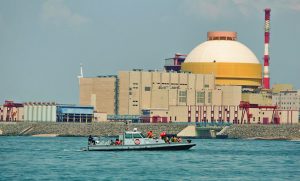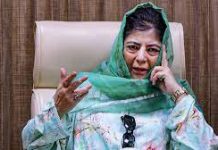When the Minister of State (Independent Charge) Atomic Energy and Space, Dr Jitendra Singh in written reply to a question in Rajya Sabha informed on November 21, 2019 that the electrical energy requirement of the country for year 2018-19 is 1274595 MUs whereas projected energy requirement for year 2021-22 is 1566023 MUs, he made a pertinent observation that country urgently needs nuclear power plants for electricity generation.
India’s potential for hydro power is 150,000 MW at 35 per cent load factor that means around 460 billion units per year. It is unevenly distributed across months. The generation from run-of-the river plants during the lean month may be as low as 10 per cent of generation during the peak month. If the country is to grow at seven or eight per cent till 2050 and even where energy efficiency is pushed, we will need around 8,000 billion kilowatt hours. If we were to push electrical vehicles it could be as much as 12,000 bkWh.
Also to increase standardisation and bring modularity in building atomic power reactors, the Nuclear Power Corporation of India Limited (NPCIL) is going for fleet mode construction for future projects. As many as 17 new reactors are now in the pipeline, with seven already under construction. The fleet mode for construction reduces construction costs and speeds up construction time. India is an old player in the nuclear energy sector with the first research reactor in Asia being commissioned in the country. India’s learning curve has been steep and it could ramp up the reactor construction to 22 reactors and it would become the seventh largest fleet in the world.
The Minister of State in the Prime Minister’s Office Jitendra Singh is of the view that awareness needs to be created among the public about busting the myths associated with the use of nuclear energy. The nuclear energy is a source of energy to meet the rising energy demands of the country and it is an instrument of ‘ease of living’ in one’s day-to-day life.
The fact is that even when we have fully developed our hydro capacity, we will still need balancing power. Since gas has to be imported, it is a limited option. Nuclear plants have been run in the past with more or less constant load. However, with some design change it should be possible to run them in a load following mode. France has been operating some nuclear plants in this mode.
The cost of nuclear electricity will depend on how it is financed. With a capital cost of 10 crore per MW, with a debt/equity ratio of 4/1, debt interest of 12 per cent, return on equity of 15 per cent, and annual generation of 7,000 MWh, the capital charge is 2.10/kWh. The operating cost at 2.5 per cent of capital cost comes to 0.36/kWh and fuel cost for pressurised heavy water reactor is 0.16/kWh. The total cost is 2.62/kWh. If we compare these with similar financing charges of solar PV with storage that gives 6,000 MWh/year it will cost 2.75/unit and cheap storage systems are yet to be developed. Thus, if we can install the nuclear plants without delay and within budget, they are economically attractive. The decision to set up 7,000 MW of nuclear plants makes economic sense.
According to the Department of Atomic Energy, the present installed nuclear power capacity in the country comprises of 22 reactors with a total capacity of 6780 MW. Of these one reactor, RAPS-1 (100 MW) is under extended shutdown for techno-economic assessment. The nuclear power plants contribute about 3 per cent of the total electricity generated in the country.
The electrical energy requirement of the country for year 2018-19 is 1274595 MUs whereas projected energy requirement for year 2021-22 is 1566023 MUs. The percentage increase in energy requirement for the country till 2021-2022 w.r.t. energy requirement of 2018-19 is 22.86 per cent.
Nuclear power plants are being established along with electricity generating plants of other technologies to meet the electricity requirements of the country. The details of location and capacity in MW of the nuclear power plants being set up are as follows:
This information was provided by the Union Minister of State (Independent Charge) Development of North-Eastern Region (DoNER), MoS PMO, Personnel, Public Grievances & Pensions, Atomic Energy and Space, Dr Jitendra Singh in written reply to a question in Rajya Sabha on November 21, 2019.
It is worth mentioning that India and the US have agreed to build six nuclear power plants in India as part of measures to strengthen security and civil nuclear cooperation, the two nations said in a joint statement. The agreement came after two days of talks in Washington between foreign secretary Vijay Gokhale and top American officials. Besides foreign office consultations, Gokhale participated in the bilateral Strategic Security Dialogue with Andrea Thompson, undersecretary of state for arms control and international security.
The two sides “committed to strengthen bilateral security and civil nuclear cooperation, including the establishment of six US nuclear power plants in India. Ä joint statement saidthe US “reaffirmed its strong support of India’s early membership in the Nuclear Suppliers Group”.
As part of the deal, the NSG granted a special waiver for India to access nuclear technology. This helped India ink nuclear cooperation pacts with countries such as the US, France, Russia, Argentina, Australia, the UK, Japan and Bangladesh.
India and the US have discussed the supply of atomic reactors for more than a decade, but an obstacle has been the need to bring Indian liability rules in line with global norms, which require costs of any accident to be borne by the operator, and not the manufacturer of a nuclear plant.
Westinghouse has been negotiating with New Delhi to build reactors, though progress has been slow due to India’s nuclear liability law. Despite Westinghouse filing for bankruptcy in 2017, the firm has received support from US energy secretary Rick Perry for building six reactors in Andhra Pradesh.
(i) Nuclear power plants under Construction:
State Location Project Capacity (MW)
Gujarat Kakrapar KAPP-3&4 2 x 700
Rajasthan Rawatbhata RAPP-7&8 2 X 700
Haryana Gorakhpur GHAVP-1&2 2 X 700
Tamil Nadu Kudankulam KKNPP– 3&4 2 X 1000
Tamil Nadu Kalpakkam PFBR 500
(ii) Nuclear power plants accorded administrative approval and financial sanction on which pre-project activities are in progress:
State Location Project Capacity (MW)
Madhya Pradesh Chutka Chutka – 1&2 2 x 700
Karnataka Kaiga Kaiga – 5&6 2 X 700
Rajasthan Mahi Banswara Mahi Banswara – 1&2 2 X 700
Mahi Banswara – 3&4
Haryana Gorakhpur GHAVP – 3&4 2 X 1000
Tamil Nadu Kalpakkam KKNPP – 5&6 2 X 1000
letters@tehelka.com














